Do you have a question about the Pentair MASTERTEMP 400 HD and is the answer not in the manual?
Critical safety instructions to prevent fire or explosion.
Emphasizes professional installation and servicing by qualified personnel.
Emergency procedures for detecting gas leaks and responding safely.
Key technical data and appliance type for the MasterTemp heater.
Directs users to read instructions before installation and operation.
Explains the control panel interface, buttons, and indicator lights.
Covers basic operation, startup procedures, and key safety features.
How to set and adjust pool and spa temperature controls.
Overview of heater components and the step-by-step operational flow.
Procedures for putting the heater into service and making connections.
Requirements for safe installation clearances, venting, and air supply.
Guidance on wiring, diagrams, and remote control connections.
System for identifying the heater model, size, and fuel type.
Visual guide to find the heater's data rating plate for specifications.
Legal and British Standard codes for gas appliance installations.
Required adherence to various installation codes and standards for safety.
Caution against connecting unapproved external control devices to the appliance.
Actions to take during overheating or gas supply failure.
Dangers of carbon monoxide and recommendations for detectors.
Recommended water temperatures and associated health risks.
Severe risks of CO exposure and immediate actions to take.
Warnings about tampering with the gas control valve and fuel type safety.
Precautions against flammable liquids, propane storage, and hot surfaces.
Warnings about asphyxiation from improper venting and wiring errors.
Important notes on installation environment and operational considerations.
Introduction to the MasterTemp heater and manual usage advice.
Details about the product's warranty and continuous improvement policy.
Caution against operating below 20°C to prevent condensation and damage.
Explains the purpose of each button and control on the interface.
Interpretation of the system operation indicator LEDs for status.
Caution against operating with safety interlocks disabled to prevent hazards.
Initial steps for basic system operation and startup.
Information on HSI ignition and essential pre-startup checklist items.
Procedures for detecting gas leaks and appropriate response actions.
Detailed sequence for operating the heater from startup to shutdown.
Procedure to safely shut off the gas supply to the appliance.
Details on the air flow switch safety device and its role.
Explains the water pressure switch and its settings and adjustment.
Information on the high limit devices within the heater and their function.
Explains the microprocessor-based ignition module's function.
Guidance on adjusting temperature settings for pool and spa modes.
Steps to set the maximum temperature limit for the heater.
Emphasizes professional installation and periodic system testing.
Overview of the heater's design and how it functions.
Detailed breakdown of the heater's operational sequence and safety interlocks.
Procedures for initial setup and bringing the unit online.
Detailed specifications and physical dimensions of the heater.
How to connect the heater to the pool/spa plumbing system.
Guidance on using valves for isolation and preventing chemical back-siphoning.
Instructions for installing and adjusting the manual bypass valve for flow control.
Ensuring adequate water flow and pressure for heater operation.
Specific adjustments and cautions for heaters installed below pool level.
Information on when and how to install a flow switch.
Compliance with British Standard Codes for gas line installations.
Guidelines for selecting appropriate gas pipe sizes based on distance.
Proper installation of sediment traps and drip legs for gas lines.
Safe methods for detecting gas leaks using soapy water.
Required gas supply pressures for natural gas and propane.
Guidelines for placing the heater outdoors and ensuring proper ventilation.
Critical safety warnings for propane gas installations in specific locations.
Minimum distances required for outdoor installation clearances.
Recommendations for venting in outdoor shelters and near openings.
Precautions against flammable chemicals and aerosols near the heater.
Guidelines for connecting to pre-existing vent systems indoors.
Required clearances for indoor installations or heaters in shelters.
Ensuring adequate air for combustion, especially indoors.
Identifying sources of corrosive fumes that can damage the heater.
General requirements for venting in indoor or sheltered locations.
Procedures for installing vertical vent systems and required components.
Charts detailing vent height and elbow limitations for various models.
Procedures for vent pipe installation, support, and condensate drainage.
Using approved fire stops and thimbles for vent penetrations.
Caution against improper assembly or mixing vent parts from different manufacturers.
Guidelines for vertical vent termination heights above the roof.
Clearances and locations for horizontal vent terminals relative to buildings.
Recommendations for vent run lengths, insulation, and condensate traps.
Procedure for connecting single-wall stainless steel vent pipes to the heater.
Caution against improper adapter attachment leading to CO risk.
Ensuring proper installation for vent pipe movement and support.
Guidelines for vertical vent termination heights above the roof.
Clearances and locations for horizontal vent terminals relative to buildings.
Further guidelines for horizontal vent termination placement.
Procedures for using flexible duct for venting the heater.
Caution against combining exhaust vents from multiple units.
Importance of maintaining clearance around vent pipes and combustible surfaces.
How to position the control panel for easier access.
Essential checks to ensure proper installation and function before use.
Heater's electrical rating and compliance with wiring standards.
Guidance for connecting external switches and controllers to the heater.
Critical caution about touching terminals with incorrect wires to prevent damage.
Steps for connecting external control systems and timers.
Visual representation of terminal board connections for control systems.
Detailed diagram for the 3-wire system wiring of the heater.
Visual representation of the heater's electrical logic and components.
Explanations for diagram symbols and important wiring notes.
Essential steps to perform before starting troubleshooting procedures.
A guide to navigate specific troubleshooting charts based on symptoms.
Warnings about hazardous voltage and bypassing safety features.
Steps to diagnose why the heater will not fire, focusing on power and control board.
Further steps for diagnosing ignition failures, including flow and pressure.
Table showing minimum flow rates required for different heater models.
Additional diagnostic steps for ignition failures, checking gas and voltage.
Final steps for diagnosing ignition failures, checking igniter and gas pressure.
Guidance on interpreting meter readings for the Ignition Control Module.
Guide to understanding LED indicators for fault diagnosis.
Caution against bypassing safety switches during troubleshooting.
How to diagnose issues based on the Stack Flue Sensor LED status.
Understanding specific error codes displayed by the heater.
Diagnosing and resolving burner noise or flame issues.
Addressing boiling or sweating issues related to the heat exchanger.
Recommended maintenance tasks for the heater and its systems.
Guidelines for installing and testing the Pressure Relief Valve.
Safety warning regarding PRV installation with restrictive devices.
Procedure for verifying water flow post-startup.
Guidelines for operating the heater in different seasons and winterizing.
Steps for winterizing the heater and related safety warnings.
Strategies to reduce energy consumption and costs.
How water chemistry affects heater performance and lifespan.
Explanation of disinfectants and their residual levels in pool water.
Guidelines for balancing pH and alkalinity for proper water chemistry.
A table of ideal disinfectant levels and chemical values for pool water.
Warning that improper water chemistry can void the heater's warranty.
Visual breakdown of electrical system parts with key numbers.
Visual breakdown of burner system parts with key numbers.
Visual breakdown of water system parts with key numbers.
Exploded views of various heater assemblies and parts with key numbers.
Detailed list of burner system replacement parts for different models.
Detailed list of water system replacement parts for different models.
Detailed list of electrical system replacement parts for different models.
Contact details for Pentair Water Pool and Spa, Inc. for support.
Reminder to retain the manual for future reference and product support.
| Brand | Pentair |
|---|---|
| Model | MASTERTEMP 400 HD |
| Category | Swimming Pool Heater |
| Language | English |
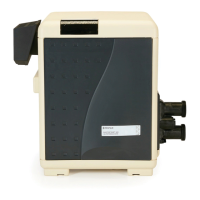
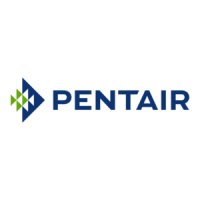
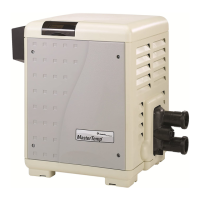
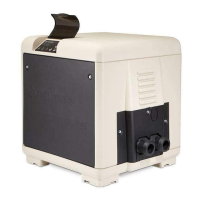
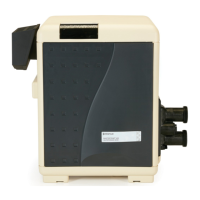

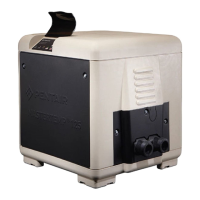
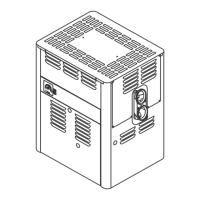

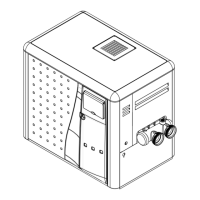
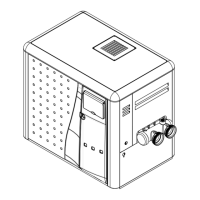
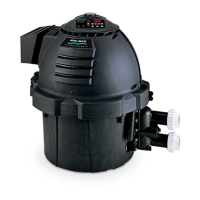
